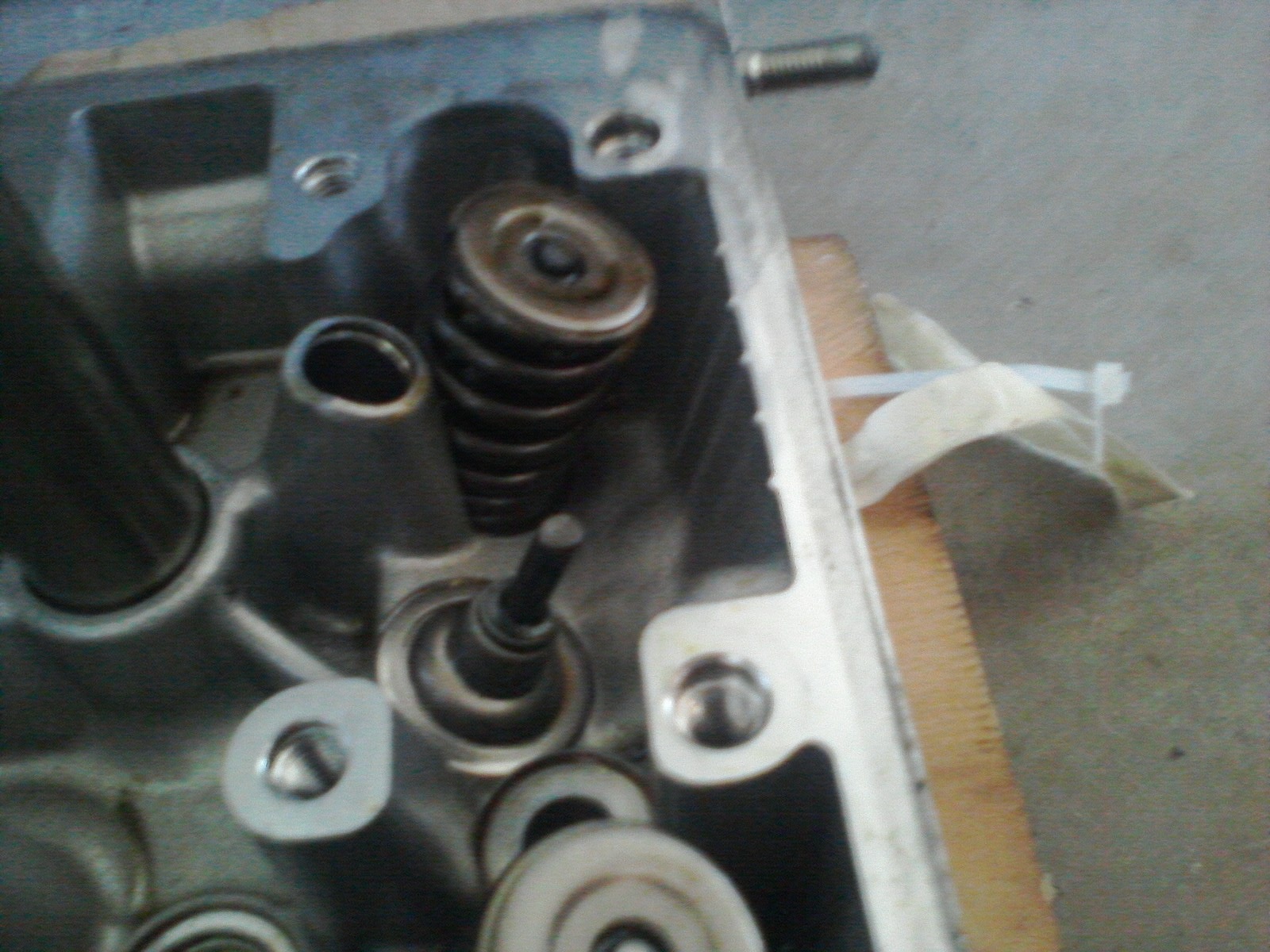Rebuilding
For part one of this story, click here.
The bolt gave way with a tiny pop, like a balloon. For a second I stood frozen, unwilling to believe what had just happened, then all the hope and enthusiasm flooded out of me, leaving nothing but aching muscles and a vague feeling of petrochemical illness.
The bolt in question secured the exhaust side of the center cam tower. Over the previous three weeks, I’d dismantled half my engine bay, removed the damaged cylinder head, spilled a pint of gasoline, learned far too much about the absorptive properties of kitty litter, laboriously cleaned the gasket surface with a razor blade, solvent, and a microfiber, installed a new cylinder head, transferred the rockers to the new towers, reinstalled the cams, and reconnected approximately one million fiddly little hoses and harnesses. Now, with one little pop, much of it would have to be undone, and if I couldn’t extract the broken end, I’d be starting over with another new head.
I had a bolt extractor kit, purchased on a whim two years earlier; I considered removing the cams and towers right away. A quick inspection of the remaining bolts revealed the likely cause of the failure – the outline of the rocker shaft oil passage was gouged deeply into each, probably by the same force that had snapped my #7 intake valve cleanly in half. It would be at least three days before I could get a full set of replacements, so, in the words of Monty Python, I bravely turned tail and fled (the garage).
A week passed in which I refused to so much as set foot in the garage. Eventually I forced a deadline on myself, pre-paying for registration to two autocrosses over Memorial Day weekend. I’d need time to shake down the car and ensure all was well, so on Friday afternoon, off came the valvetrain. As luck would have it, the broken portion of the bolt was almost exactly flush with the hole, easing the drilling of a pilot hole. The extraction itself was nerve-wracking; the bit threw curls of metal in all directions and spun for what seemed like ages before it grabbed, then the bolt practically flew out.
With a surge of returning optimism I reinstalled what I’d removed, then, with all fingers and toes firmly crossed, torqued all twenty tower bolts. I wanted to keep working, but my hands and arms had other plans, gradually developing a degree of mobility shared with those of B-movie zombies.
The bulk of Saturday was consumed with a road trip to visit a very special automaker (watch this space-article coming soon!); by the time I got back it was 3pm and raining, but I chugged two Red Bulls in a burst of gastric disregard and jittered my way out to the garage. Everything thereafter went suspiciously smoothly; I checked and rechecked the manual, but eventually there was nothing to do but press the big red button.
In my mind’s eye, there would be a horrific grinding noise, followed by jets of coolant and oil like severed arteries, and possibly a medium-sized fire.
It started on the first crank.
If I hadn’t been sitting in the driver’s seat, I might have fallen over with shock.
Ultimately it’s a testament to the logic and robustness of Honda engineering that someone like me, who’s basically a spanner-wielding chimpanzee, can rebuild a motor making 120hp per liter in his garage, with nothing but hand tools. If it hadn’t been a car I was so emotionally attached to, and if it hadn’t required so much money in a short span of time, the experience would have actually been quite a lot of fun. Certainly the sense of fulfillment that came with hearing it crack VTEC for the first time in two months was second to none.
Actually, if I’m not careful, I might wake up one morning with a project Jaguar in the driveway…
A big thank you to Gavin Rennie at Infinite Motion Racing in San Diego for answering all of my endless phone calls and giving indispensable advice. I couldn’t have done it without your help.

